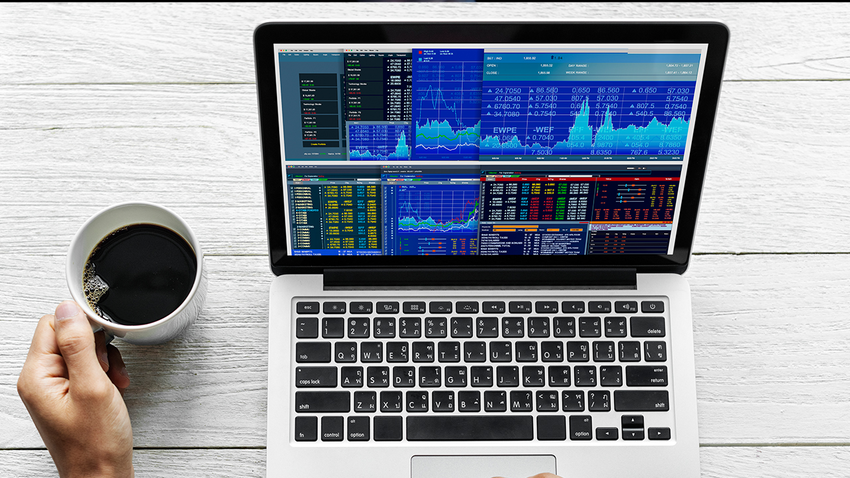As humans evolve their lifestyles, they also come up with new inventions and advancements in technologies such as artificial intelligence. As you are aware, computers have the capability to handle extensive calculations and huge tasks. The human mind is bound to a certain limit, and calculating and processing big tasks or mathematical problems is not possible manually.
In algorithmic trading, investors and traders use computer software to automate trades in the stock market. Algo-trading was introduced in India in 2008, but there were only a few people who were using it. But as time passes, the algo-crowd has grown and captured around 60% of the stock trading market. The people who write these algorithms and drive the software are known as ‘quantitative analysts’ or simply ‘quants’. These people have knowledge about physics and mathematics and also have experience in risk management. They have a good knowledge of finding trades with an effective price for investing and gaining returns on them. Algorithmic trading is not a difficult task for quants who know what to do and what not to do. They are trained professionals who often know and take advantage of the benefits of algorithmic trading.
Table of Contents
Functions of Algo-Trading
Algo-trading works on coded instructions and mathematical formulas that trace and work on a certain pattern of a stock price. The functions of entry and exit trades in algo-trading are fully automated and used by technical traders.
The most important thing about algorithmic trading is to use the right strategy at the right time. However, the trading analyst needs to backtest the strategy and check the success rate of the strategies. After developing a strategy, you need to add these algorithms to the software and test the program in a virtual trading session. To consider an example, suppose you want to buy 1000 shares of XYZ company, which are priced around ₹200. If the price touches ₹205 or above, you will buy 10 shares, and if the price goes below ₹200, you can sell your shares. This entire process works in a small fraction of time and requires instant execution, which is not possible through the manual process. The ineffectiveness of human intervention leads to heavy losses in this trade. But if you have a program working on your behalf, then trading will be smooth and profitable.
Algorithmic trading is experiencing rapid growth as a cutting-edge technology featuring advanced functionalities that enhance trade efficiency and speed for market participants. Nowadays, financial entities like banks, brokerages, and investment funds leverage intricate algorithms to swiftly establish and exit positions. This enables these organisations to capitalise on minor market discrepancies in real time, surpassing what can be achieved through manual trading.
Algorithmic Strategies
There are several types of algorithmic trading strategies. Each algorithm is made to achieve a different trading goal. These strategies include trend following, mean reversion, momentum-driven algorithms, and arbitrage trading. A computer can buy, sell, or hold assets based on preprogrammed instructions, which are used for multiple data streams. The market makers purchase and sell. This involves keeping details in digital records for each transaction.
Mean Reversion
The goal of this strategy is to monitor the high and low prices of a specific asset, which temporarily results in the price reverting to the mean value over time. The algorithm works to provide the defined price of the financial asset.
Trend Detection
Market securities have constant ups and downs. Placing an algorithm that can predict the uptrend and downtrend of a particular asset can often help traders. This trend detection algorithm finds suitable trends and predicts the future direction of financial securities.
VWAP
The VMAP stands for the Volume-Weighted Average Price, which calculates a small chunk of the order using the historical volume profile of the securities. This algorithm seeks to execute the order close to the volume-weighted average price of a stock.
TWAP
The Time-Weighted Average Price (TWAP) strategy breaks a huge order and releases a smaller chunk of it, which is an order which is evenly divided into time slots between a start and an end time. The strategy seeks to execute the order of shares near the average price that lies between start and end times.
The Percentage of Volume
The Percentage of Volume (POV), also called Participation Rate, is a simple strategy which executes the order quantity as a percentage of the trade volume of the stock in a given time interval.
What are the Benefits of Algo-Trading?
The benefits of algo-trading include:
- You can automate trade at a lower price
- Lower portfolio management costs
- Timely trade without any human error
- Frequent automated checks on multiple conditions
- Backtest your trading model in a virtual environment
- You can trace the historical and real-time data to select strategies for your trading
- Algo-trading software reduces the possibility of error and allows for high-frequency trading
- Complete decision-making tasks by machine, removing emotional and psychological factors that could harm your business
There are lots of advantages to algo-trading, but remember that everything comes with a drawback, and a major disadvantage is blind trust. It’s better to consult a financial advisor from a firm like Share India to guide you through your investment journey in the stock market.
Requirement for Algorithmic Trading
For performing algorithmic trading, you need to have a computer with good specifications and a fast Internet connection. Along with the system, you need to have a software which consists of a number of strategies and mathematical models.
Remember, it’s good to test your model regularly before trading in the real world. A trader can make several strategies for taking multiple trades at the same time. Trading with less knowledge about technical charts and patterns can be difficult to manage, and in that case, it is recommended to hire a technical trader for your algo-trading.

